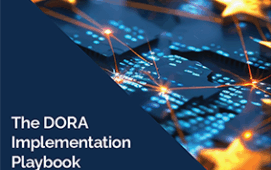Following on from the series of roundtables last year conducted by the US Commodity Futures Trading Commission (CFTC) to examine the data standardisation challenges underlying the provisions contained within the Dodd-Frank Wall Street Reform and Consumer Protection Act, the regulator has published a set of proposals in the Federal Register regarding the identification of counterparties in swaps transactions. The CFTC has given the industry until 22 February to respond to the proposals, which include new “know your counterparty” requirements and the introduction of new counterparty identifiers and classifications.
These proposals are aimed at allowing the regulator to better monitor fraud, abusive practices within the swaps market and adherence to new position limits, according to the CFTC. This is part of Section 4s(h) of the Dodd-Frank reforms, which requires a much higher degree of transparency within the swaps market with regards to dealings with counterparties. The net result of these requirements will be the compulsion for firms to adopt new reference data classifications for counterparties, as well as new identification codes. For example, swaps dealers will now be more closely defined by the type of trading activity in which they are involved, hence the introduction of new classifications such as providing advice to a “special entity”.
Basic reference data items such as the names and addresses of individual counterparties must be kept up to date and the same information must be available for “any other person guaranteeing the counterparty’s performance or controlling the counterparty’s positions”, according to the CFTC’s proposals. The regulator is asking for feedback on these and all other requirements relating to counterparty data disclosure, including potential impact assessments of how much these new requirements will cost to implement and any existing standards or formats that could be used.
To this end, it also asks: “Should the Commission delay the effective date of any of the proposed requirements to allow additional time to comply with the requirements? If so, which requirements, and what is the compliance burden that should merit a delay?”
Much like the Office of Financial Research’s proposed entity identification requirements, the CFTC hopes to have the relevant mandatory rules in place by 15 July this year. This means the industry has five months from the closing of the comment period in which to agree upon a standard that it will have to adopt for counterparty identification purposes within the swaps market (and all other markets, from the Office of Financial Research’s perspective).
The CFTC has also, in conjunction with the Securities and Exchange Commission (SEC), published further definitions of the characteristics of each party within a swaps market transaction. These alter and supplement current classifications for counterparties and entities within the financial transaction chain and will therefore impact the underlying data workflow by adding new fields and data checking requirements. For example it introduces checks around whether a counterparty has a “substantial exposure” to a particular markets.
These requirements have been tailored to individual asset types within the swaps markets and the regulators are keen to receive feedback on whether the various thresholds for the purposes of definition are appropriate. This particular part of the proposals also asks firms to provide feedback on the “burden of the collection of information”, ergo the data management costs of the whole endeavour, and whether there are any ways to minimise this burden.
The CFTC has been very active over the last couple of years in discussing the underlying data inadequacies that lie at the heart of the industry. For example, last month, CFTC chairman Gary Gensler discussed the legal entity identification challenges the regulator faced throughout the flash crash investigation during a testimony before a Senate committee.
The regulator is asking for firms to provide online feedback to the proposals by the 22 February, either via the CFTC website here or via the Federal eRulemaking Portal here.
Subscribe to our newsletter




